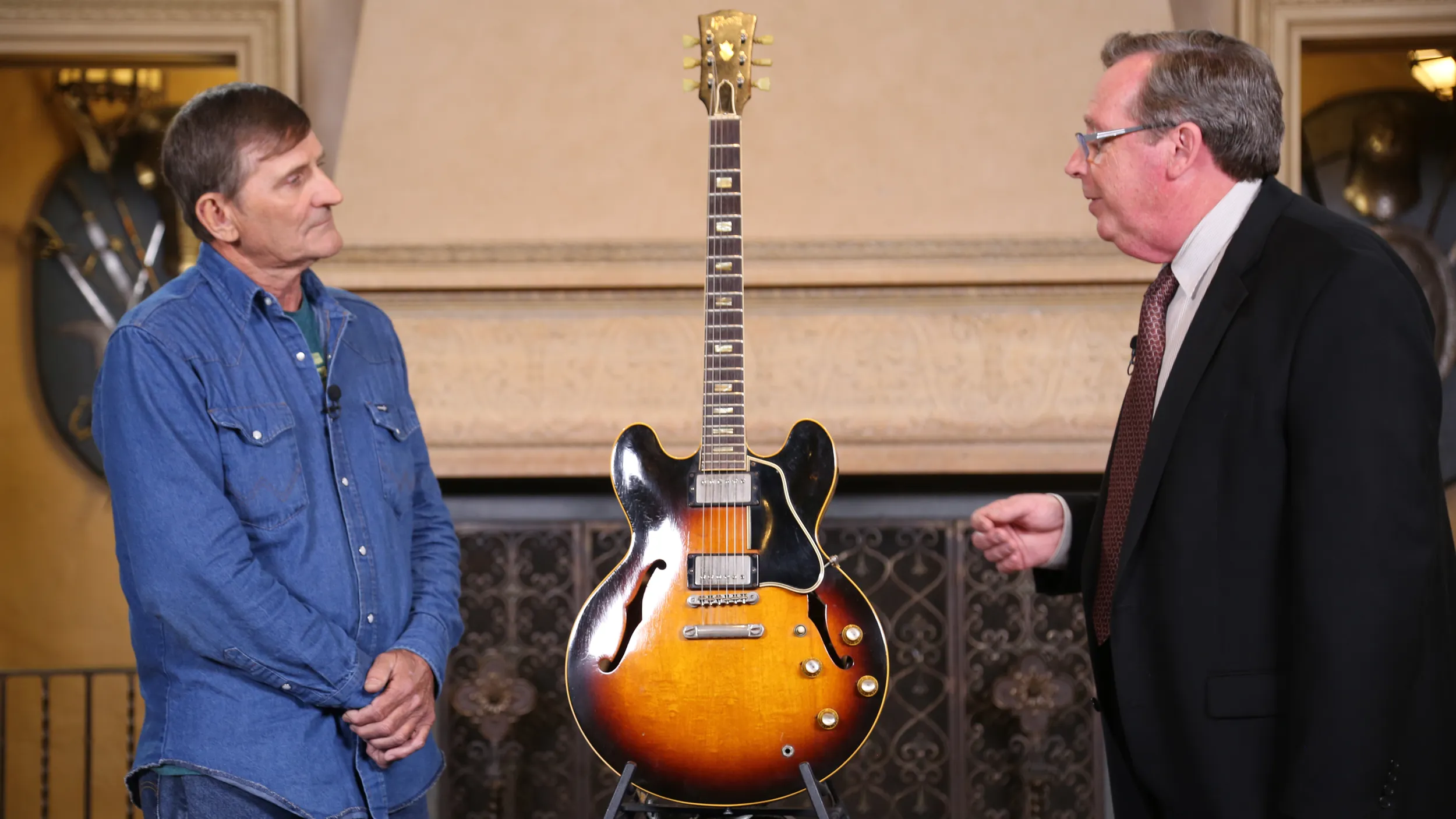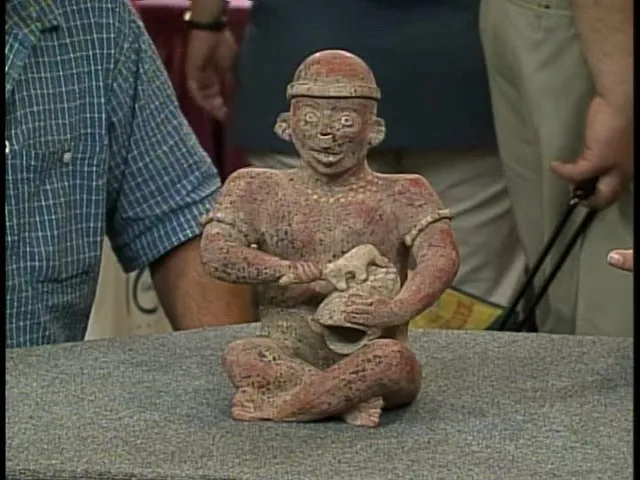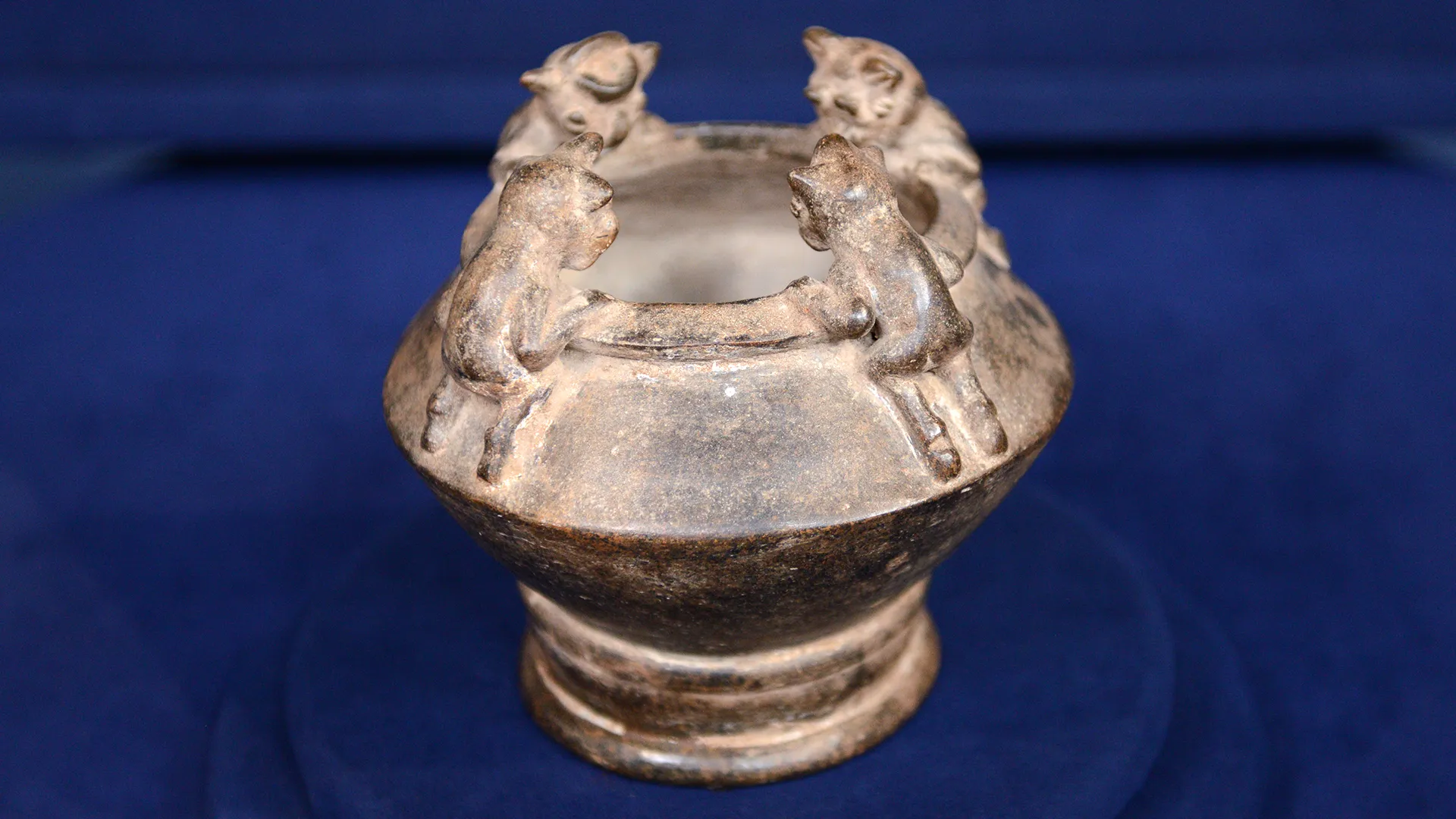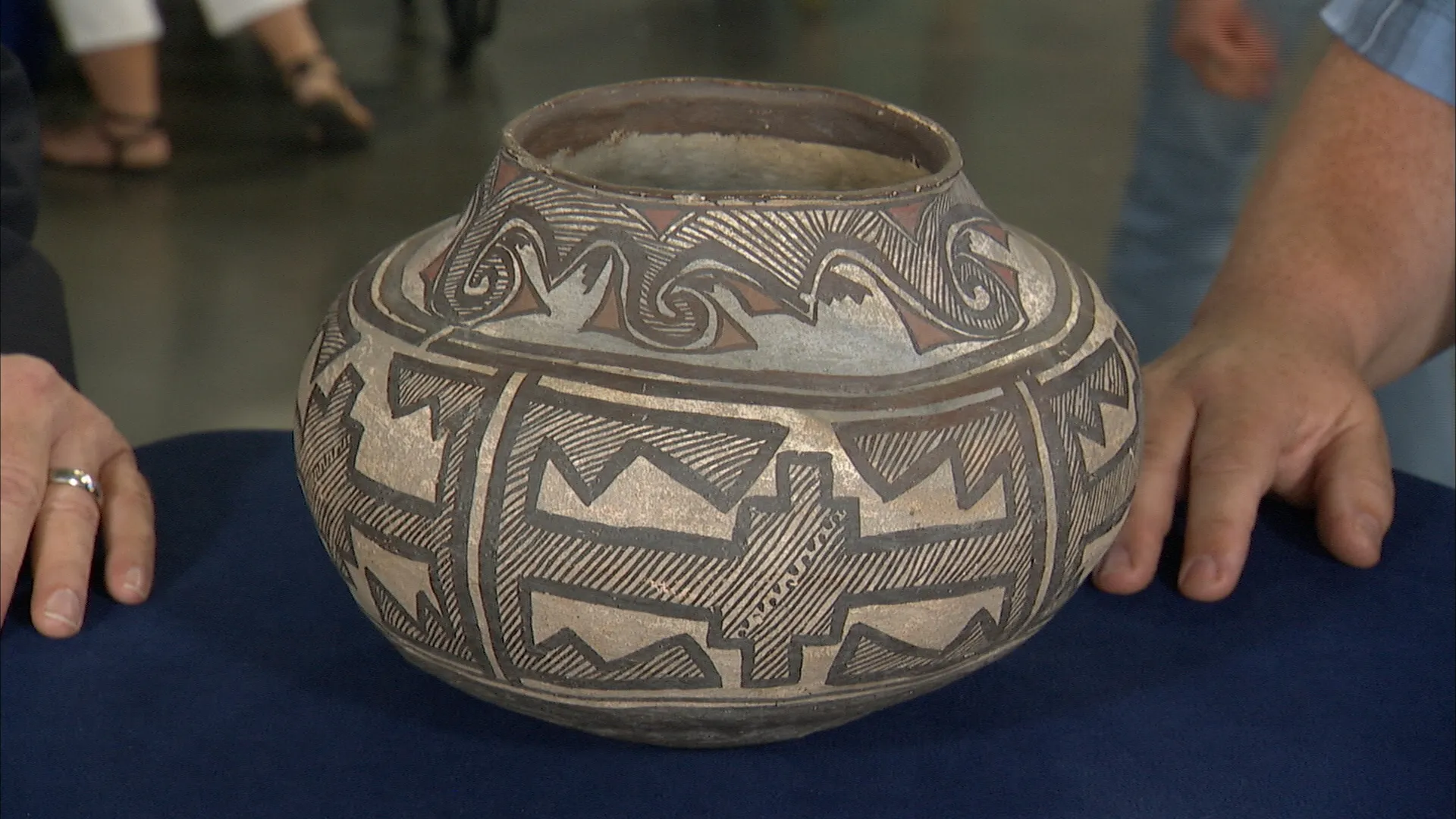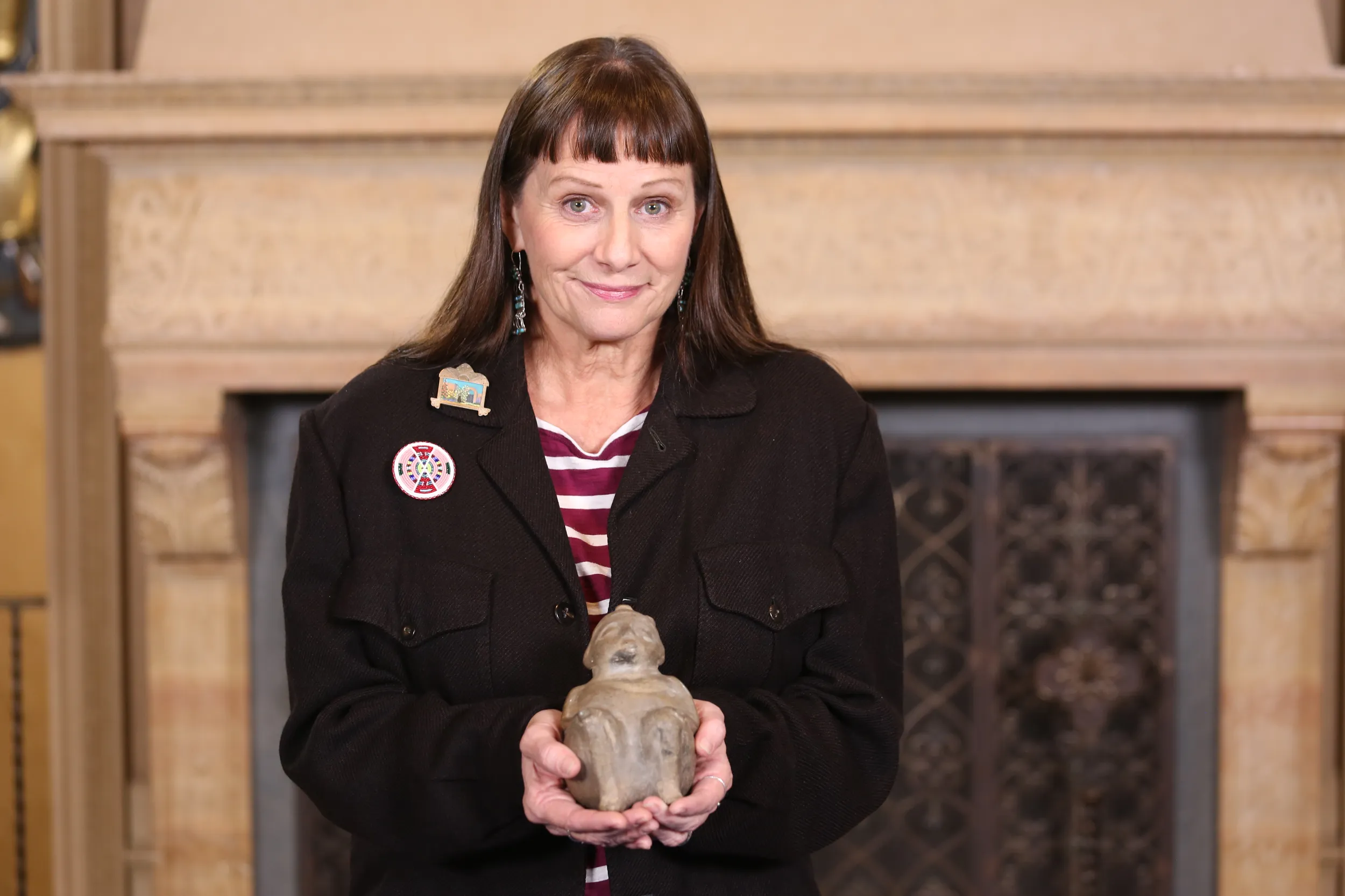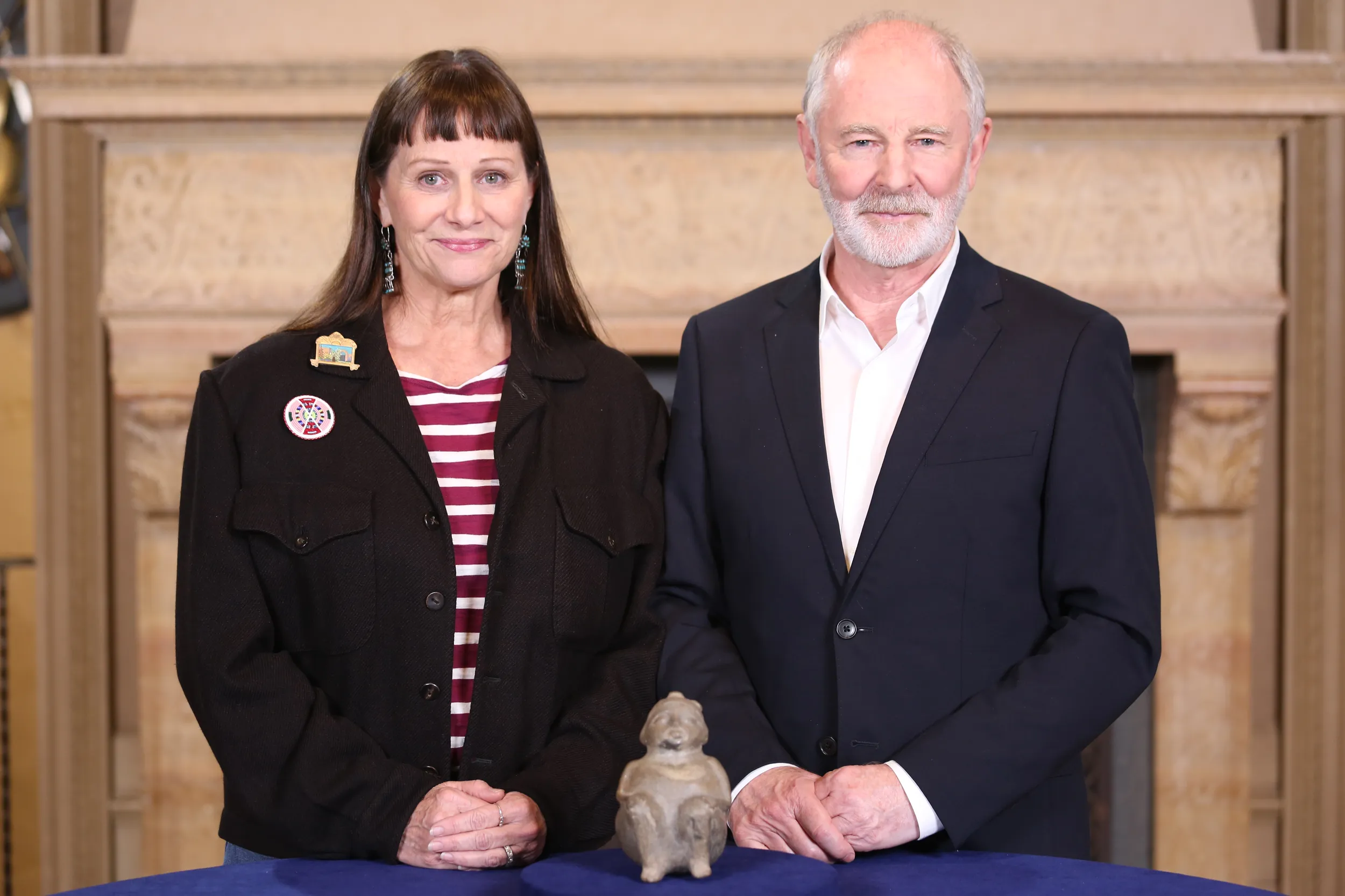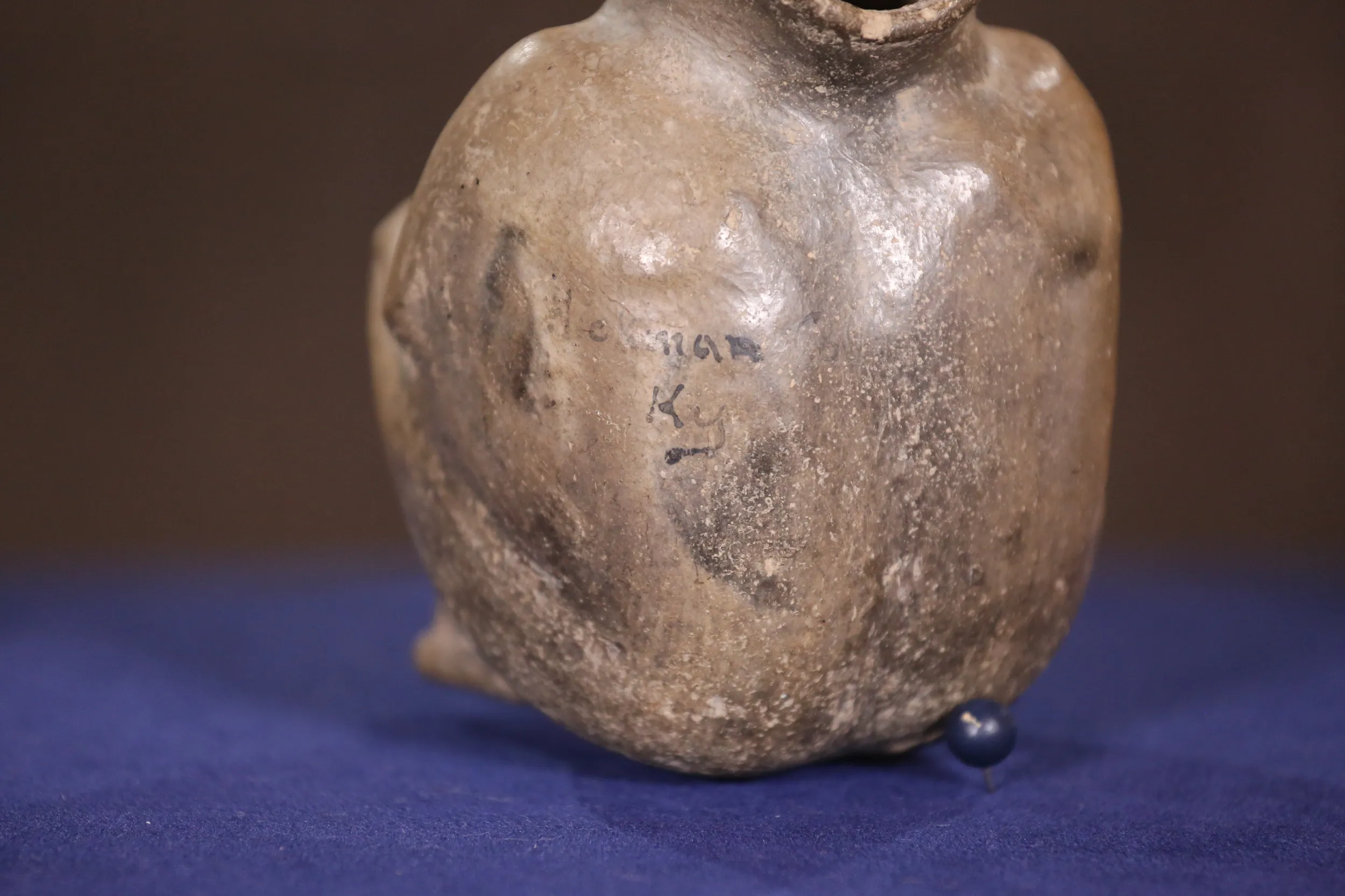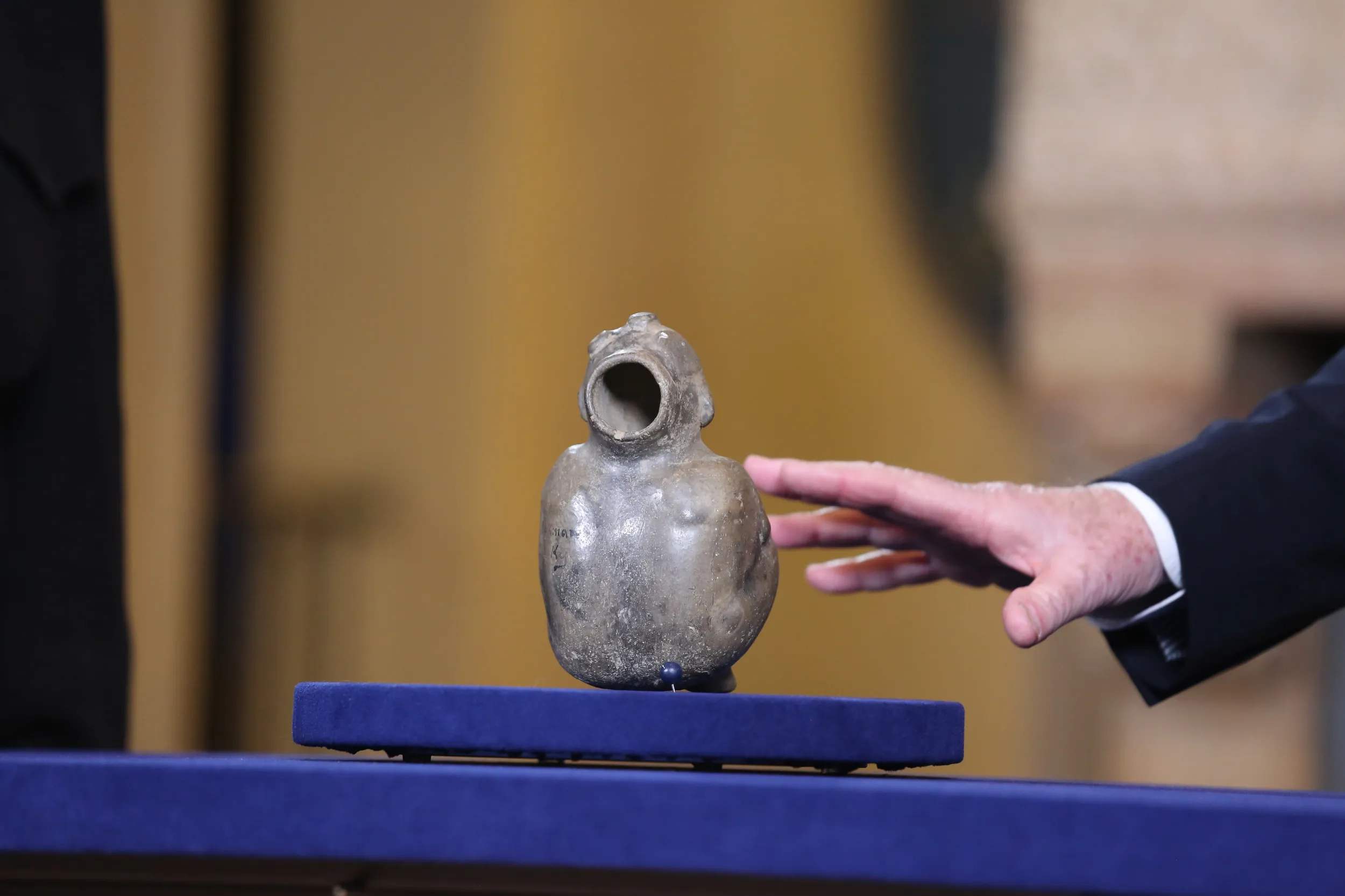GUEST: It's a mound builder pot.
APPRAISER: Uh-huh.
GUEST: I inherited it from my father. I think he got it around... in the 1980s, out in Santa Fe, from an art dealer or an antiques dealer out there while he was working there at the Institute of American Indian Arts.
APPRAISER: Okay, and any idea of what he paid for it?
GUEST: I have no idea.
APPRAISER: I know you were concerned whether it was authentic or not.
GUEST: Yeah.
APPRAISER: And it absolutely is.
GUEST: Oh!
APPRAISER: It's, it's Mississippian culture, a mound builder. It's a great clay. It's known as Belle Plaine clay, which is this polished gray. And it goes from gray to buff to orange sometimes. It's a shaman's effigy figure, and it's a wonderful figure. More often than not, they're female. But this is, I believe, a male figure, which is unusual and much more rare. This one has got wonderful detail with the shoulders. And if we turn it around, you'll see that the scapula on the back is just lightly identified, and the spine. And sometimes they are humpbacked. We don't know why they are. Whether the humpback maybe had a significance in the society, or maybe they were just looking for more volume in the pot. I don't know. You can also notice someone has written "Pickman County, Kentucky," and I would imagine that is the location, the find spot of the piece, where it came from. It's in wonderful condition, and it dates between... Well, the Mississippian culture, it's between tenth and 16th century. It's really hard to pinpoint exactly. So, the piece is probably around about a thousand years old.
GUEST: (whispers) Wow!
APPRAISER: But it's marvelous that it's intact. They don't usually get beyond about seven inches, and quite often they're much smaller. And this one is just under seven, so it's highly significant. The Mississippian culture is from the Southeastern parts of America, and it covered a really wide area. Everywhere sort of the Mississippi touched on.
GUEST: We're Osagean-- we're associated with the mound builders up by St. Louis. Cahokia Mounds, our tribe is.
APPRAISER: Even though this culture spread all over the Southeast, there, there's a great similarity between the work. I mean, they were very fixed on effigy pots. We get them as effigy figures, and we also get the very famous effigy heads. I'd be very comfortable at giving a retail value between $4,000 and $6,000.
GUEST: (whispers) Wow. Wow! (laughs) That's great!

